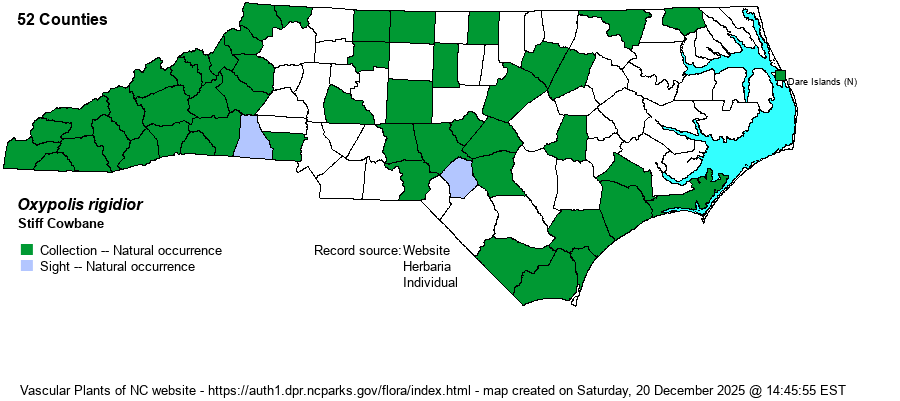| Author | (L.) Rafinesque | |
| Distribution | Throughout the Mountains, but scattered across nearly all of the Piedmont; present in much of the Coastal Plain, though mostly absent in the northeastern portions.
This is a widespread Eastern species, mainly from PA and MN south to western FL and eastern TX.
| |
| Abundance | Fairly common to frequent in the Mountains; uncommon to infrequent in the Piedmont and in the southern and western Coastal Plain. Rare in the northern Coastal Plain. | |
| Habitat | This is a wetland species, growing in bogs, openings in swamps, wet thickets, streamsides, and other damp and usually partly shaded ground. |
| Phenology | Blooms from August to October, and fruits in October and November. | |
| Identification | This is a rather robust herb, growing to about 3-4 feet tall. This species has only few alternate leaves, and unlike most others in the family, has just singly-pinnate leaves, with about 5-9 leaflets. Each leaflet is sessile, rather narrow and usually oblong to oblanceolate, about 4 inches long and 1-inch wide, usually with several quite sharp and distinct teeth at the distal end, but most of the basal 3/4th of the leaflet is entire and uncut, though some specimens can show serrated margins. The umbels at the end of the stem or branches are rather large, about 5-6 inches across, with 20 or more umbellets on long and often curved rays, with small white flowers. But it is the distinctive once-divided leaves and narrow, sharp-tipped leaflets that identify the species, not the flowers. | |
| Taxonomic Comments | None
| |
| Other Common Name(s) | Pig-potato | |
| State Rank | S5 | |
| Global Rank | G5 | |
| State Status | | |
| US Status | | |
| USACE-agcp | OBL link |
| USACE-emp | OBL link |

